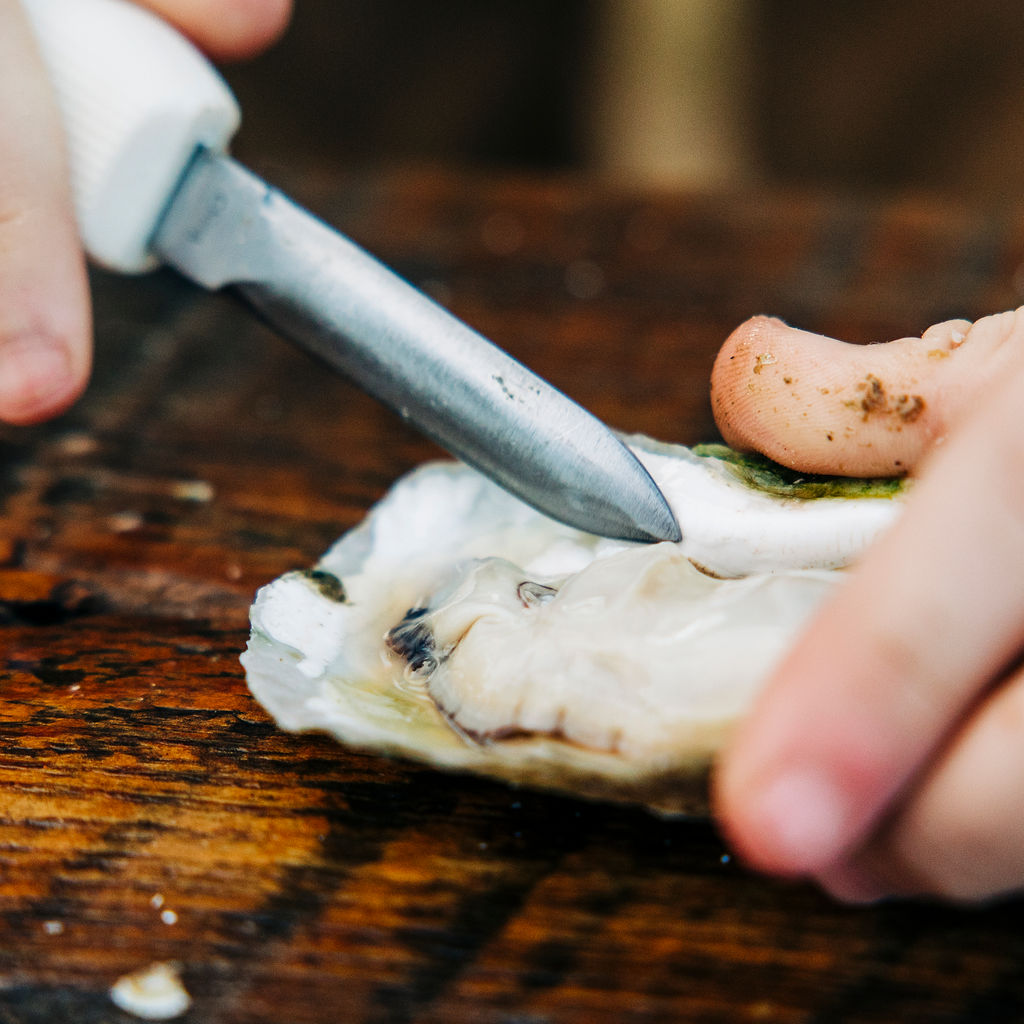
Myths, Busted! Debunking Common Oyster Myths.
Credit: Andrea Jablonski
To clear up any mistruths about the shellfish, CEO of Shuckin’ Shack, Jonathan Weathington and Tom Perry, president of White Stone Oysters are debunking some of the most common oyster myths and encouraging customers to safely enjoy fresh and tasty oysters year-round!
“We want oysters to be more approachable,” said Perry. “We’re getting people more familiar with what they’re eating, and the more they understand what’s behind them, the better decisions they’re able to make instead of just avoiding oysters entirely.”
Avoid Oysters That Weren’t Harvested in Months with the Letter ‘R’
This may have been a good rule of thumb in the past, but as refrigeration has become more advanced, this myth is defunct. Warmer-than-average waters increase the likelihood of vibrio vulnificus, the bacteria that can cause people to get sick after eating oysters. But in line with FDA guidelines, Shuckin’ Shack’s suppliers begin cooling oysters as they’re harvested, so no matter if it’s July or December, oysters are safe to eat.
“When you’re dealing with a controlled population of oysters, they’re being cooled right away. You’re not harvesting and serving raw oysters sitting out in the sun after being harvested. Because we’re dealing with more aquacultured oysters, they’re safe to eat year-round,” said Weathington.
“If they’re harvested properly before 10 a.m. and cooled properly to a 45 degree temperature that’s maintained through the oyster’s life before it’s served, then there should be no illness. Illness comes when that cold chain is broken. And if you’re working with a good supplier, that’s not going to happen,” Perry added.
Temperature isn’t the only factor that contributes to the safety of oyster eating, this myth also has to do with the oyster’s activity during earlier months of the year and whether or not they’re wild or farmed.
The difference lies in whether or not you’re eating a farm harvested oyster or one that is wild caught. Oyster farms operate to keep oysters in constant motion, giving them access to more abundant food sources that keep them fit and healthy all year. Plus, unlike wild oysters, farmed oysters don’t reproduce, which means they’re not shedding a large percentage of their body mass come springtime. So, having oysters that are sourced straight from the farm truly makes all the difference.
“We’re selling oysters that aren’t spawning, they’re nice healthy and plump year round,” said Perry.
Eating Raw Oysters Will Make You Sick
Sure, if you eat upwards of 40 raw oysters in one night you might not feel incredible the next day, but the same would likely be true if you ate that amount of any food. The fact of the matter is, restaurants like Shuckin’ Shack are experts in shellfish handling, and are the best places to consume raw shellfish because they follow CDC guidelines. Raw oysters can make you sick, but because they’re properly harvested and cooled before they’re served, that risk is low. If you’re still intimidated by the idea, you can eat them fried, steamed or chargrilled to ease your concerns.
Plus, when you think of alternative proteins you’re likely to order at a restaurant like chicken or beef, you have to consider the amount of handling and processing that went into preparing your dish. With oysters, once you break open that shell, you’re the first person who’s going to touch what you’re eating. What could be fresher?
“There’s nothing that you can put in your body that’s more fresh than this. An oyster hasn’t been touched by anybody but you,” said Perry. “Some people feel a sense of security from eating processed food, but oysters are super fresh. There’s nothing between you and the oyster.”
Dousing Them in Hot Sauce Will Kill Any Bacteria
Weathington says this is his favorite myth, but simple science will tell you that this is just not true. Drowning oysters in hot sauce has the same effect as running them under water. And while pairing them with a bottle of wine is common, alcohol won’t kill any bacteria either. The only thing that will kill any harmful bacteria is prolonged exposure to a high enough temperature.
Is Bigger Better?
Weathington says that oysters are a bit like steak — some people prefer a ribeye, others prefer a New York strip.Smaller and larger oysters both hold a wide range of taste profiles, including salinity, sweetness, smoothness of finish, and size of meat. But when it comes to eating the best oysters, size doesn’t matter. It’s all about freshness. Oysters typically make it to the table two to three days after being harvested and cooled — and the fresher they are, the better they taste — but they have a shelf life of 10–14 days.
Oysters Are an Aphrodisiac
This is perhaps one of the most common myths surrounding oysters, but there is no science behind the idea to prove that it is true. This myth likely stems from the fact that oysters are a good source of zinc, which can increase the production of testosterone, but the jury is still out on whether or not it’s the oysters that are getting you in the mood.
“I am not a chemist or a biologist, but oysters are often treated as something special and consumed on special occasions, and special occasions can lead to one thing or another,” Weathington joked.
